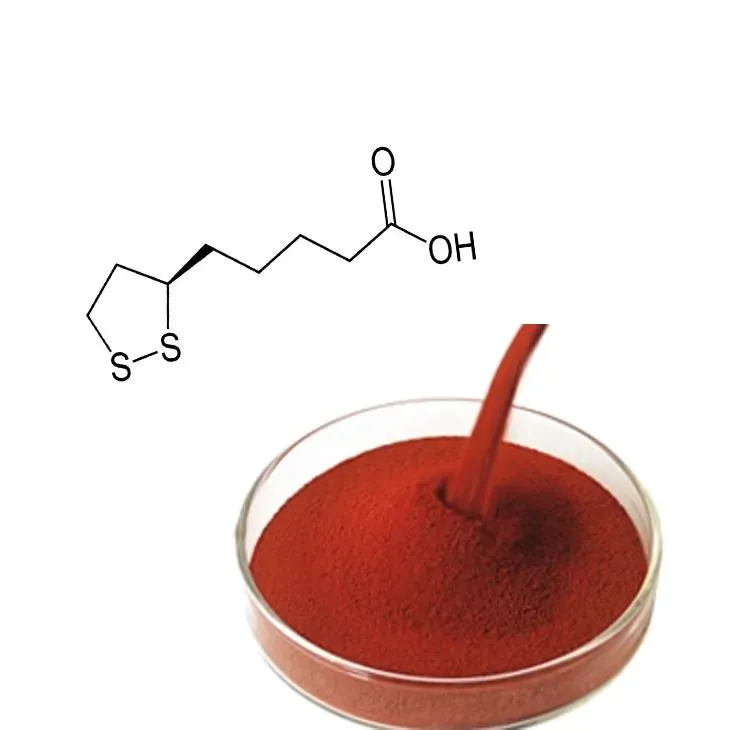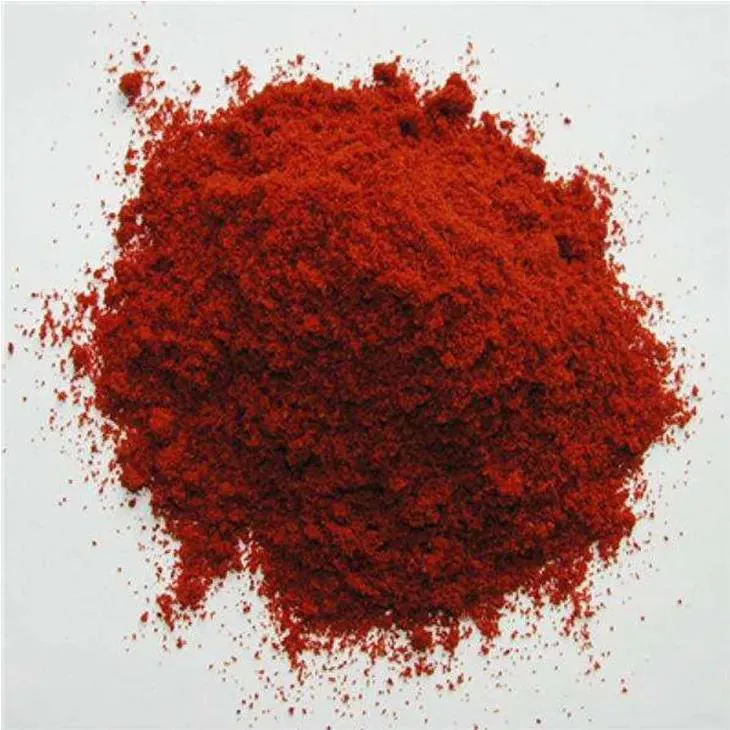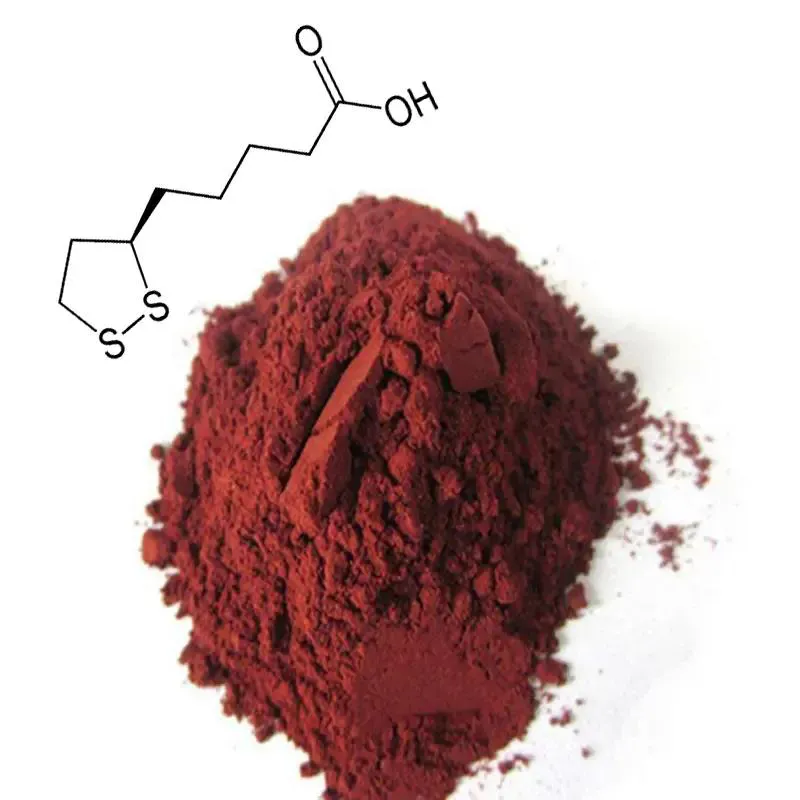- 0086-571-85302990
- sales@greenskybio.com
Supplier of Organic Astaxanthin Powder.
2024-11-29

1. Introduction
In the realm of health and nutrition, organic Astaxanthin powder has emerged as a highly sought - after substance. As more and more consumers are becoming health - conscious and are aware of the potential benefits of this compound, the role of a reliable supplier has become crucial. Organic Astaxanthin powder is known for its antioxidant properties, which are far superior to many other common antioxidants. It has been linked to a variety of health benefits, including but not limited to skin health improvement, eye health protection, and anti - inflammatory effects. Therefore, ensuring a steady supply of high - quality organic Astaxanthin powder is of great significance.

2. Purity of the Product
Purity is one of the most fundamental aspects when evaluating an organic astaxanthin powder supplier. High - quality suppliers place a great emphasis on ensuring that their product has a high level of purity.
2.1 Importance of Purity
Contaminants and impurities in the astaxanthin powder can not only reduce its effectiveness but may also pose potential risks to the consumers. For example, if there are traces of heavy metals or other harmful substances, long - term consumption could lead to adverse health effects. Pure astaxanthin powder ensures that the consumers are getting the maximum benefit from the product without any unwanted side - effects.
2.2 Quality Assurance Procedures
To achieve high purity, suppliers implement strict quality assurance procedures during the production cycle. This may include:
- Sourcing of high - quality raw materials: Suppliers need to ensure that the raw materials used for producing astaxanthin powder are of the highest quality. This often involves partnering with reliable producers of microalgae, which are the primary source of astaxanthin. For example, some suppliers source their microalgae from carefully monitored and controlled aquaculture farms, where the growth conditions are optimized to produce pure and potent astaxanthin - rich microalgae.
- Advanced extraction techniques: The extraction process plays a crucial role in determining the purity of the final product. Modern extraction techniques, such as supercritical fluid extraction, are preferred by many reliable suppliers. This method allows for a more precise and efficient extraction of astaxanthin, minimizing the extraction of unwanted substances. Compared to traditional extraction methods, supercritical fluid extraction can result in a purer form of astaxanthin powder with a higher concentration of the active compound.
- Stringent purification steps: After extraction, the product goes through a series of purification steps. These may include filtration, chromatography, and crystallization processes. Filtration helps to remove any remaining solid particles, while chromatography can separate astaxanthin from other closely related compounds. Crystallization is then used to obtain the purest form of astaxanthin powder. Through these purification steps, suppliers can ensure that their product meets the highest purity standards.
- Regular quality testing: Quality control laboratories play a vital role in the production process. Suppliers conduct regular tests on their organic astaxanthin powder to check for purity, potency, and the absence of contaminants. These tests are carried out at various stages of production, from raw materials to the final product. For instance, spectroscopic techniques such as high - performance liquid chromatography (HPLC) are used to accurately measure the purity of astaxanthin powder. If any batch fails to meet the purity standards, it is either re - processed or discarded.

3. Supply Chain Integrity
The integrity of the supply chain is another critical factor when considering an organic astaxanthin powder supplier.
3.1 Timely Delivery
Customers rely on suppliers to provide the product in a timely manner. In the health and nutrition industry, delays in delivery can have significant consequences. For example, if a company that uses astaxanthin powder in its dietary supplement products experiences a delay in receiving the raw material, it may face production disruptions, which can lead to lost sales and customer dissatisfaction. A well - managed supply chain ensures that the product is shipped and delivered according to the agreed - upon schedule. This requires efficient logistics management, including proper planning of inventory, transportation, and delivery routes.
3.2 Quality Maintenance during Transit
During the journey from the production facility to the end - user, the quality of the organic astaxanthin powder must be maintained. This involves proper storage and handling at every stage of the supply chain.
- Storage conditions: Astaxanthin powder is sensitive to certain environmental factors such as light, heat, and humidity. Suppliers need to ensure that the product is stored in appropriate conditions. For example, it should be stored in a cool, dry place away from direct sunlight. In some cases, specialized packaging may be used to protect the powder from environmental degradation. Vacuum - sealed packaging or packaging with light - blocking and moisture - resistant properties can help to preserve the quality of the astaxanthin powder during storage.
- Transportation requirements: When transporting the product, suppliers must take into account factors such as temperature control and shock prevention. If the astaxanthin powder is exposed to high temperatures during transportation, it may degrade, losing its potency. Therefore, refrigerated transportation may be necessary in some cases. Additionally, proper cushioning and packaging should be used to prevent the powder from being damaged by shocks or vibrations during transit.

4. Innovation Ability of the Supplier
In today's highly competitive market, the innovation ability of an organic astaxanthin powder supplier can set it apart from its competitors.
4.1 Product Formulation Innovation
Suppliers can innovate in terms of product formulation to make their astaxanthin powder more appealing and effective. For example:
- Blending with other nutrients: Combining astaxanthin powder with other complementary nutrients can enhance its overall health benefits. Some suppliers are formulating blends of astaxanthin with vitamins C and E, which are also well - known antioxidants. This combination can create a more powerful antioxidant formula that offers enhanced protection against oxidative stress. By formulating such unique blends, suppliers can target specific health concerns and attract a wider range of customers.
- Micro - encapsulation technology: Micro - encapsulation is an innovative technique that can improve the stability and bioavailability of astaxanthin powder. The astaxanthin is encapsulated in a protective shell, which can protect it from degradation during digestion and also enhance its absorption in the body. Suppliers that invest in this technology can offer a product that is more effective and has a longer shelf life compared to traditional astaxanthin powder formulations.
4.2 Delivery Method Innovation
Innovation in delivery methods can also be a competitive advantage for suppliers.
- Nano - delivery systems: Some suppliers are exploring the use of nano - delivery systems for astaxanthin powder. Nano - particles can improve the solubility and bioavailability of astaxanthin, allowing for better absorption in the body. These systems can also enable more precise targeting of the astaxanthin to specific cells or tissues, enhancing its effectiveness. Although nano - delivery systems are still in the research and development stage in the context of astaxanthin, suppliers that are at the forefront of this technology may have a significant edge in the future.
- Customized dosage forms: Suppliers can also innovate in terms of dosage forms. Instead of the traditional powder form, they can develop alternative forms such as tablets, capsules, or gummies. These customized dosage forms can be more convenient for consumers to use, especially for those who have difficulty swallowing powder. For example, gummies are a popular form among children and the elderly, and suppliers who can offer astaxanthin in this form may be able to tap into a new market segment.
4.3 New Applications of Astaxanthin Powder
Discovering new applications for astaxanthin powder is another area where suppliers can show their innovation.
- Cosmetic applications: In addition to its use in the health and nutrition field, astaxanthin powder has great potential in the cosmetic industry. It can be used in skincare products such as creams, serums, and masks due to its antioxidant and anti - aging properties. Suppliers can work with cosmetic companies to develop new products that incorporate astaxanthin powder, expanding the market for this compound. For example, some high - end cosmetic brands are already using astaxanthin in their anti - aging creams to improve skin elasticity and reduce the appearance of wrinkles.
- Animal nutrition: Astaxanthin powder can also be used in animal nutrition. It is known to enhance the coloration of fish and shellfish, making them more visually appealing in the market. Additionally, it has potential health benefits for animals, such as improving their immune function and antioxidant status. Suppliers can explore this area by developing specialized astaxanthin - based animal feed products, which can be sold to aquaculture farms and livestock producers.
5. Ethical and Sustainable Practices
In the modern business environment, ethical and sustainable practices are becoming increasingly important for organic astaxanthin powder suppliers.
5.1 Ethical Business Practices
Suppliers should follow ethical business practices in all aspects of their operations. This includes:
- Fair trade: When sourcing raw materials, suppliers should ensure that they engage in fair trade practices. This means paying a fair price to the producers of microalgae, especially those in developing countries. By doing so, suppliers can support the livelihoods of these producers and contribute to the economic development of their communities.
- Transparency: Suppliers should be transparent in their business operations. This includes providing accurate information about the product, its origin, and the production process to the customers. Transparency builds trust with the customers and helps to establish a long - term relationship.
- Compliance with regulations: Suppliers must comply with all relevant local and international regulations regarding the production, sale, and marketing of organic astaxanthin powder. This includes regulations related to food safety, environmental protection, and labor laws. By adhering to these regulations, suppliers can ensure that their products are safe for consumption and that their operations are legal and sustainable.
5.2 Sustainable Production Methods
Promoting sustainable production methods is not only good for the environment but also for the long - term viability of the business.
- Energy - efficient production: Suppliers can invest in energy - efficient production technologies to reduce their energy consumption. For example, using renewable energy sources such as solar or wind power in the production facility can significantly reduce the carbon footprint of the production process. Additionally, optimizing the production process to minimize energy waste can also contribute to energy savings.
- Waste reduction: Minimizing waste is another important aspect of sustainable production. Suppliers can implement waste management strategies such as recycling and re - using materials wherever possible. In the production of astaxanthin powder, waste can be generated during the extraction and purification processes. By finding ways to recycle or re - use these by - products, suppliers can reduce their environmental impact and also potentially lower their production costs.
- Sustainable sourcing of raw materials: As mentioned earlier, the source of microalgae for astaxanthin production is crucial. Suppliers should ensure that they source their raw materials from sustainable aquaculture farms or other sustainable sources. This may involve promoting the use of non - invasive harvesting methods and ensuring that the growth of microalgae does not have a negative impact on the local ecosystem.
6. Conclusion
When searching for an organic astaxanthin powder supplier, it is essential to carefully evaluate various aspects. Purity, supply chain integrity, innovation, and ethical - sustainable practices are all key factors that can determine the quality and reliability of a supplier. By choosing a supplier that excels in these areas, businesses and consumers can ensure that they are getting high - quality organic astaxanthin powder that meets their needs and expectations. As the demand for organic astaxanthin powder continues to grow, suppliers that can meet these criteria will be well - positioned to succeed in the market.
FAQ:
What should be considered when choosing an organic astaxanthin powder supplier?
When choosing an organic astaxanthin powder supplier, several aspects should be considered. Firstly, the purity of the product is crucial. High - quality suppliers ensure a high - level purity of their powder, free from contaminants and impurities through strict quality assurance procedures. Secondly, supply chain integrity matters. A well - managed supply chain guarantees timely delivery and maintained product quality during storage, transportation, and handling. The innovation ability of the supplier is also key, as those who can innovate in product formulation, delivery methods, or new applications have an advantage. Finally, ethical and sustainable practices are increasingly important, such as following ethical business practices and promoting sustainable production methods.
How can a supplier ensure the purity of organic astaxanthin powder?
Suppliers ensure the purity of organic astaxanthin powder through strict quality assurance procedures during the production cycle. This includes careful selection of raw materials, strict control over the production process to prevent contamination, and thorough testing of the final product to confirm its purity.
Why is supply chain integrity important for an organic astaxanthin powder supplier?
Supply chain integrity is important for an organic astaxanthin powder supplier because it ensures that the product reaches the customer in a timely manner and maintains its quality throughout the journey. This involves proper storage to prevent degradation, safe transportation to avoid damage, and correct handling procedures at all stages.
What kind of innovation can an organic astaxanthin powder supplier bring?
An organic astaxanthin powder supplier can bring various types of innovation. For example, they can innovate in product formulation, such as developing new blends or combinations with other beneficial substances. They can also innovate in delivery methods, like creating more efficient ways to encapsulate the powder for better absorption in the human body. Additionally, they can explore new applications of astaxanthin powder in different health or nutrition - related areas.
How do ethical and sustainable practices relate to an organic astaxanthin powder supplier?
Ethical and sustainable practices are highly relevant to an organic astaxanthin powder supplier. Ethically, they should follow fair business practices, such as accurate labeling and honest dealing with customers. In terms of sustainability, they can promote methods like reducing waste during production, conserving energy, and using environmentally friendly packaging, which not only benefits the environment but also meets the increasing consumer demand for sustainable products.
Related literature
- Organic Astaxanthin: Production and Applications"
- "The Role of Astaxanthin in Health and Nutrition: A Comprehensive Review"
- "Sustainable Production of Organic Astaxanthin: Current Trends and Future Prospects"
- ▶ Hesperidin
- ▶ Citrus Bioflavonoids
- ▶ Plant Extract
- ▶ lycopene
- ▶ Diosmin
- ▶ Grape seed extract
- ▶ Sea buckthorn Juice Powder
- ▶ Fruit Juice Powder
- ▶ Hops Extract
- ▶ Artichoke Extract
- ▶ Mushroom extract
- ▶ Astaxanthin
- ▶ Green Tea Extract
- ▶ Curcumin
- ▶ Horse Chestnut Extract
- ▶ Other Product
- ▶ Boswellia Serrata Extract
- ▶ Resveratrol
- ▶ Marigold Extract
- ▶ Grape Leaf Extract
- ▶ New Product
- ▶ Aminolevulinic acid
- ▶ Cranberry Extract
- ▶ Red Yeast Rice
- ▶ Red Wine Extract
-
Nettle Root Extract
2024-11-29
-
Lycopene
2024-11-29
-
Giant Knotweed Extract
2024-11-29
-
Gynostemma pentaphyllum extract
2024-11-29
-
Milk Thistle Extract
2024-11-29
-
Tinospora cordifolia extract
2024-11-29
-
Coix Seed Extract
2024-11-29
-
Carrageenan Extract Powder
2024-11-29
-
Lily extract
2024-11-29
-
White Willow Bark Extract
2024-11-29





















